Everything in your garden even gardening jokes and happy stories......



Thats a new one on me Incognitol, did you put the photo in also to this site?
Thanks for sharing it to us.

I thought it was so interesting, never knew this plant existed, I just copied the whole article and the photo's just post, haven't tried to post one of my own yet.

Thanks Incognito -- how interesting I never knew about this plant --looks lovely too

A close up Incognito --

Such a lovely looking plant but reading about it it is really very dangerous and deadly -- makes you wonder if the little birds were OK wrapping their young in it -- or do they have immunity to it??

Thanks PlanB so interesting looking, I would suspect the birds have some immunity to it.

It reminds me of one of my creepers Stephanotis floribunda. They use in Bridal bouquets.
Have often get them as large seed pods but throw them out.
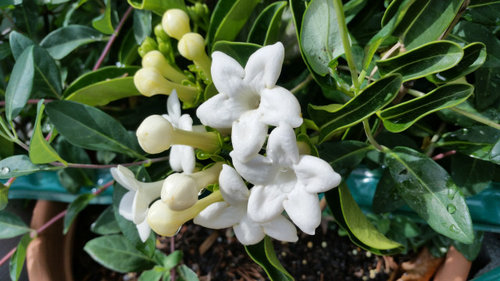
Stephanotis floribunda syn. S. jasminoides, the Madagascar jasmine, waxflower, Hawaiian wedding flower, or bridal wreath is a species of flowering plant in the family Apocynaceae, native to Madagascar. Growing to 6 m (20 ft) or more, it is an evergreen woody climber with glossy, leathery oval leaves and clusters of pure white, waxy, intensely fragrant tubular flowers.[1]

Gorgeous little dainty flowers, interesting plant too.

Also a lovely thing Celia -- looks a lot like Jasmine flower -- but the fluffy bit I have also not seen -- do they self-seed like a real pain or are they well behaved --
Wonder if they are poisonous as well??

The Calotropis wool project sounds fascinating.

Ours is growing along the Pergola outside the master bedroom, has a lovely scent in the heat of summer especially at night. I also have three Jasmine plants around the garden, add to that two Two Port Wine, their real name is Michelia Coco! Highly scented.

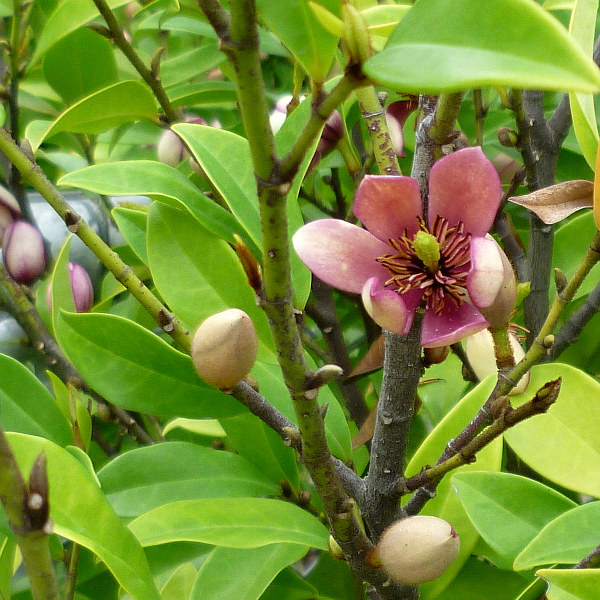

Seeds from the time of Jesus and the Maccabees are being renewed—and grown amid the fruits of Jewish-Arab unity.
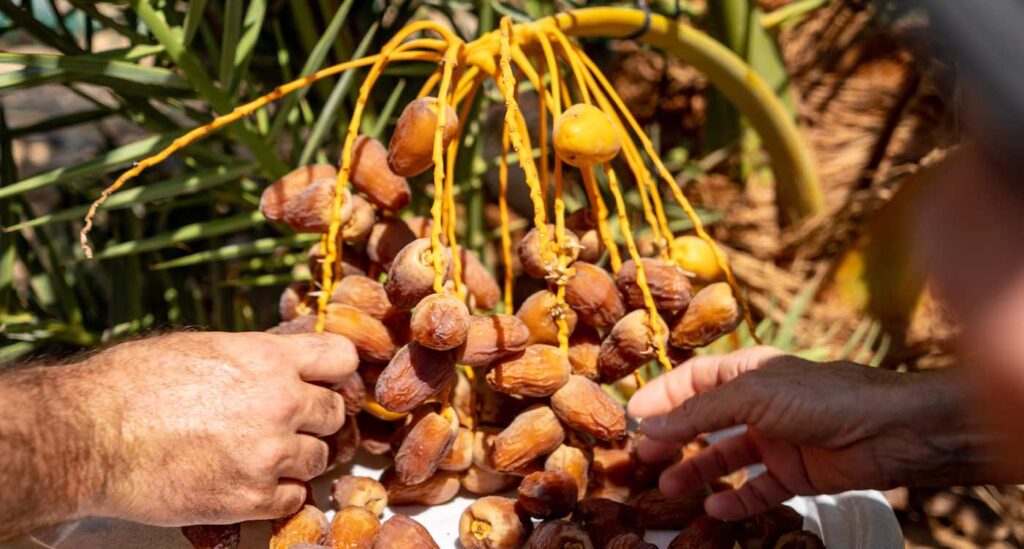
We all know the resurrection story from 2,000 years ago described in the pages of the Christian bible. Recently, a restoration of life, in a sense, took place in the Holy Land—but with 2,000-year-old dry date seeds from the same region where the religious legends began.
In the 1960s, when archaeologist Yigal Yadin dug at Masada, an ancient fort that is one of Israel’s most popular tourist attractions, he found a catchment of Judean date seeds.
Through radiocarbon analysis, the seeds of the species Phoenix dactylifera were shown to be around 1,990 years old, or from 35 BCE to 65 CE, when the Roman philosophers Strabo and Pliny were writing about the Judean date’s medicinal qualities.
15 years ago, Dr. Elaine Soloway of the Arava Institute for Environmental Studies, along with Dr. Sarah Salon of Hadassah Medical Center, were able to miraculously germinate one of the seeds.
In honor of its longevity, it was named Methuselah, after the longest-living human being in the Bible (Genesis 5: 21-27). Methuselah, however, being a male tree, would not be able to produce a date without a female partner. So in 2014, six seeds were germinated from 32 that were unearthed in archaeological digs in the Judean Desert and near the Dead Sea, from a similar age.
They were also given Biblical names, but only one female—Hannah—flowered.
RELATED: Muslim Cleric Who Hid 262 Christians During Attacks is Honored by the U.S.
In the spring of this year, she was pollinated using the powdery grains from Methuselah. And soon, Hannah produced 111 dates that were recently harvested..
Most of the semi-dry dates with reddish-blonde color will be used for research, but the masterminds behind the project got to taste a few, with Dr. Soloway enjoying the “honey or caramel aftertaste.”
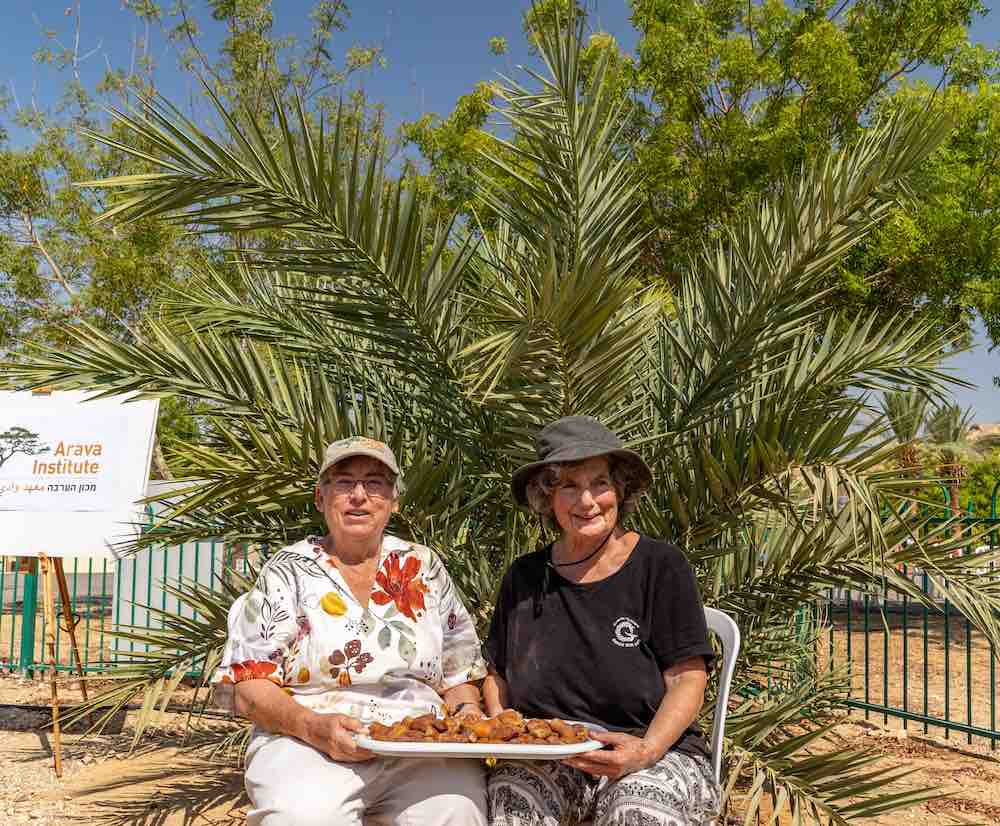 Researchers Dr. Elaine Soloway of the Arava Institute for Environmental Studies (left) with Dr. Sarah Salon of Hadassah Medical Center, moments after picking the dates – MARCOS SCHONHOLZ
Researchers Dr. Elaine Soloway of the Arava Institute for Environmental Studies (left) with Dr. Sarah Salon of Hadassah Medical Center, moments after picking the dates – MARCOS SCHONHOLZ
The home of these extraordinary trees is the Kibbutz Ketura campus of the Arava Institute located on the Israeli-Jordanian border in the dramatic Arava Valley—with the steep, mile-high, red mountains of southern Jordan – biblical Edom – on one side and the whitish limestone from ancient ocean floors on the Israeli side, in a section of the Great Rift Valley between Syria and Africa.
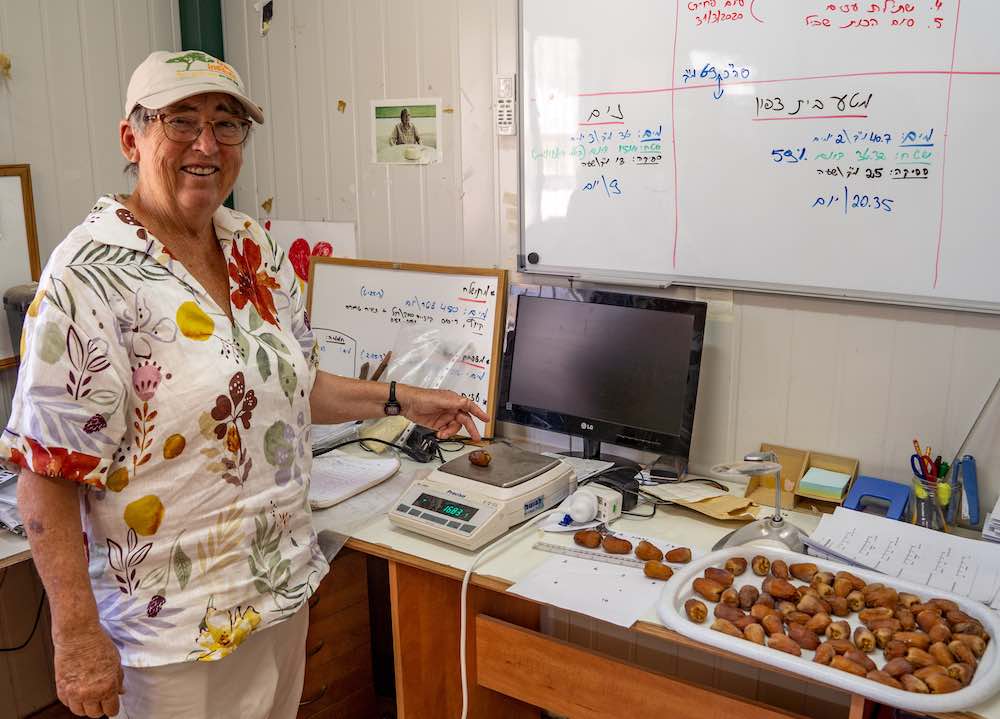 Photo by MARCOS SCHONHOLZ, Arava Institute
Photo by MARCOS SCHONHOLZ, Arava Institute
There is something else remarkable about the home of these dates. Since 1996, the Arava Institute has brought together Israeli, Palestinian, and Jordanian college students to learn how to cooperatively solve the regional and global challenges of our time.
Foster cross-border environmental cooperation through discourse at a time when it is so needed, the leaders here engage civic organizations and individuals representing Jews and Arabs with both state and private interests to discuss, develop, and negotiate formal and informal environmental agreements.
The Arava Institute reminds participants that the conflict between Israelis and Palestinians is about land—more precisely, the borders that nations draw on the land. When the land is looked upon solely as a geopolitical instrument, it is viewed as one of the major stumbling blocks to any reconciliation or just settlement of the conflict. However, when the land is approached, as it is at Arava, from an environmental perspective—which knows no political borders, walls and fences—new frameworks open up, including in the political sphere: New dynamics are created.
The student body of the Arava Institute is made up mostly of Jews, Christians, and Muslims—and in those three religions, born in the deserts of the region, dates and date trees have always played an important role, according to Rabbi Michael M. Cohen, who teaches at the Arava Institute and also at Vermont’s Bennington College.
“Following the example of Muhammad, Muslims traditionally break their daily fast during Ramadan with a date. In the Jewish Torah, dates are considered one of the seven most important species of the Land of Israel. And Jesus was reportedly welcomed into Jerusalem with his supporters waving date palm branches.”
RELATED: Israeli and Palestinian Farmers Find Peace Through Olive Oil
Grown on this campus steeped in faith, the dates of Methuselah and Hannah, like all the great redemption stories, remind us that what today appears to be dead or beyond reach can in fact be revived to help create a better, more just, and redeemed tomorrow.

Wasn't sure where to post this, did post in on Our Planet but looks like no one is reading that topic at the moment.

Thanks for sharing reminds me of the times back into the UK when they had this as a treat over Christmas! Also when we sailed through the waters of these areas.
Not sure what is happening, there doesn't seem to be anyone, all I know from friends is they come into the site read some of the articles then not write a comment except Hala and RnR. Some friends never comment on the site they say, even the friend that introduced me to the site some years ago never leaves a comment! He will write an email to me and comment about something that has been stated or comment about the attitude of people writing;also said stand up to them LOL, after someone has had a 'go' at me! LOL.
Shame they don't write it would be nice to hear what they think considering the effort that has been put into some of the Threads.

I thought it was so interesting they were able to grow plants from such old seeds, I would think now they will become a part of the big seed bank.
I buy organic dates online from a good supplier, just got some delivered a few days ago, so fresh, tasty and soft. Look up Nut Grocer or you might find a more local supplier.
I think people cannot handle the nasty comments that are made sometimes on this site, don't blame them. Better not to engage at those times. Don't put more fuel on the fire so to speak. I am learning lol.

Amazing they were able to propagate the seeds. Quite a process according to the Arava website.

https://arava.org/arava-research-centers/arava-center-for-sustainable-agriculture/methuselah/

We had them in the garden prior to where we are now, not a favourite of mine!

This morning I was thinking about my Gardenias, they look sad so I looked up a few points of interest to help them.
Here is one site I thought was useful.
Gardenias are one of the most popular and rewarding garden shrubs to grow in temperate and subtropical gardens. Their heady fragrance, masses of beautiful cream flowers from spring to autumn and glossy green leaves make a highly desirable combination for gardens, hedges or pots.
In early spring, though, gardenias can be a worry. By the end of winter, they are often looking miserable with yellow leaves and no flowers – or worse, buds that are brown and dropping.
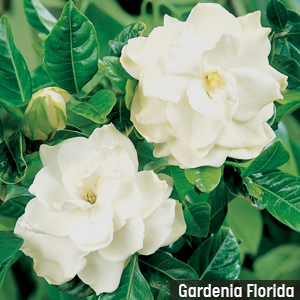 Most gardeners have heard somewhere along the garden grapevine that gardenias need a dose of Epsom salts in spring. While this won’t hurt them, magnesium deficiency (which is what is treated with Epsom salts) is a very minor disorder.
Most gardeners have heard somewhere along the garden grapevine that gardenias need a dose of Epsom salts in spring. While this won’t hurt them, magnesium deficiency (which is what is treated with Epsom salts) is a very minor disorder.
The key to understanding how to improve the look of gardenias in early spring is to know the conditions they enjoy. Gardenias are subtropical shrubs and are related to citrus. They grow naturally in areas with mild winters and warm, moist summers.
In most parts of southern Australia, winters vary from mild to cold and even frosty. When soils are cold, gardenias wish they could relocate to Cairns or somewhere tropical. In these cold and often dry conditions, they hunker down and stop taking up nutrients. This is what leads to yellowing leaves.
With the arrival of spring, day temperatures begin to rise, but soil warming is slow. Gardenias take time to get the nutrients they need to return to their lush, green state. By late spring, however, the warm soils, balmy days and higher humidity levels see most gardenias looking far better.

TIPS TO BOOST YOUR GARDENIAS
Liquid feed: In late winter and early spring, apply a liquid fertiliser for flowers - we love Sudden Impact for Roses liquid, which is great for all flowering plants - not just roses! Repeat in a fortnight.
If yellow leaves persist, apply Yates Iron Chelate Liquid (follow the instructions on the container).
Water: If the soil is dry, water gardenias well making sure that the water is soaking in around the roots. Water regularly when conditions are dry. If soils are hard to wet, mix a soil wetting agent into the watering can - Wettasoil is a great option for this.
Slow release feed: In addition to the liquid food, scatter slow-release fertiliser around your plants. There are plenty of special formulations for gardenias on the market, but our favourite is Kahoona. Alternatively, you can use any product that's formulated for flowering plants or citrus. This fertiliser will kick in to feed the plant as conditions warm.
Feed again in summer.Add organic matter: Toss a few spades of composted cow manure or compost under the plants as mulch – organic matter helps improve soil condition, which leads to better growth.
Remove old buds: Buds formed in late autumn often fail to open. Remove these to make way for new flowers.Check for pests: Check for waxy brown or white scale on the backs of leaves and on stems.
Ants on the plant or a skin of black sooty mould on the leaves indicate the plant has scale. Spray with horticultural oil.
Repot:
Potted gardenias that have been in the same pot for two or three years can be repotted in spring into a larger pot with fresh, good quality potting mix.
For the happiest gardenias, we suggest you choose a premium mix that's specially formulated for gardenias, such as Supersoil Professional Gardenia, Camellia and Azalea Potting and Planting Mix.Chewed buds: Weevils hide in the soil and feed on new buds and leaves.
Use a torch to check plants at night and squash any found. With good feeding and regular watering, most plants will outgrow the damage.Pruning: If pruning is needed to tidy or shape the plant, it can be done at any stage during the warmer months. The gardenia will quickly put on new growth, but remember pruning delays flowering.By: Jennifer Stackhouse

One of my favourites! I sprinkle the seeds in the soil and wait to see how they develop!

https://housemethod.com/lawn/columbine-flower-planting-care/
https://www.yates.com.au/plants/flowers-and-ornamentals/aquilegia/how-to-grow-aquilegia
I find the yellow are lovely but hard to come by.


Lovely Celia.

My cat's grass!
they have one each grown from seeds from Bunnings

Do they eat this Celia? What type of grass is it?

They are indoor cats Incognito, yes they nibble on it.
I think it is Fothergills that sell the seeds amongst the other seeds available that I have purchased for the garden. It is not grown in soil though. The container is available at My Pet Warehouse state wide.
https://www.mypetwarehouse.com.au/catit-20-senses-grass-planter-p-29057

I also have two that I grow in soil and just change the dishes around so they get a choice!
It is grown in Vermiculite.

Also: I use this for other hanging containers and mix it with some soil so the weight is not heavy and collapses as it can get heavy when it is watered.
I made a large jug years ago when I was into certamics, I put Vermiculite into it with a little bit of soil and planted seedlings in there, so the flower cascade down over the edge. I hung it up under the pergola and feed it with Thrive now and again.

How interesting, I have only had a couple of cats in my life and never knew about cat's grass. I guess it makes sense they need their greens too )

When I have people over I call it their 'salad' LOL!

Self seeded in the wrong place too close to the rose bush Antirrhinum from last year but growing this year, have just let it be to see what happens!

Nice.

Grown at the begining of the year during Lock down here in WA I took bits of cuttings and little self seeded seedlings from around the garden and put them into this basket to see what would happen, then I went and purchased some violas later in the year.

:) Just beautiful Celia. Good on you.
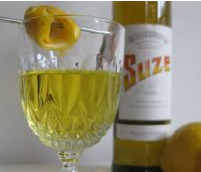
Lovely hanging basket :)

Fantastic effort Celia, love it, wish I had one, tried hanging baskets but don't work where I live.

Celia - You certainly have a Green Thumb. Your garden puts mine to shame. All my soil is Clay and when we tried digging into it, underneath was the builder's rubbish. I now have to have all my plants in pots, but they do look nice.

Thank you Hola, yes it was frustrating, all the building rubbish had to be removed and throw out.
As I get older the pots are taking more work as they dry out so quickly, I don't think the pansies will last too much longer as we are getting warmer weather. I am wondering whether to let them go or replace them with something that stands up to the heat.
What have you got in your pots?
The string 'beans' you see in the basket I had not grown before but I have had the 'peas' which are similar. I am shocked at how fast they grow! On Sunday I trimmed them up, it was like giving them a hair cut! LOL The 'bits' that were left over I have thrown into a pot with soil like I did a few months ago and they just start growing again. I only started off in Autumn with a tiny pot of them!

Well done Celia, a credit to your gardening skills.

Two cuttings of different Geraniums put into a pot under the Pergolas at home.

All your plants are just lovely, especially the Geraniums, one of my favourites. I have had cuttings of Big Red Geraniums and planted some outside of my Villa. Nothing happened for months, because of the Winter, but just in the last few weeks they are flowering beautifully, and last week my Pandora Red and Pink are in full bud, can't wait to see them flowering. I put some meshing behind them so they will have somewhere to climb. My Violas we eaten by slugs so won't be growing them in future.

Thank you RnR, Hola, Incognito and Suze for your complements!
I use Liquid Potash in a wateringcan to bring the blooms on.
I find the caterpillars are always eating away at everything in our garden doesn't matter what I put on the plants to keep them away! As for the slugs I have to continually look for them to get the devils. They like to hide under the pots and the saucers Hola. I am always getting rid of them especially in the cooler weather. I never water our plants when the sun is hot, leave the watering just before the sun sets. Except the roses otherwise you get mildue.
I have a climbing Geranium Hola but I don't know its name it is the bright pink one in the hanging basket I keep taking bits of it and putting it around the garden, makes a splash of colour.

One of my favourite Pansies

Your flowers are just beautiful Celia ... a real credit to you.

Thank you RnR and Toot.
I went out and got some bags of Sheep and Cow manure on Monday to put onto the Magnolias but started to not feel so good, went to the doctors yesterday and I am on antibiotics now with instructions to keep out of the sunshine while on the medication! So I either do it at the crack of dawn or in the dark! Trouble is it is so windy that time of day here and I hate gardening in the strong winds. Will have to wait for a week while the medication is finished. I have sinusitis. Probably got it while gardening in the wind!

Sorry to hear you are not well again Celia, don't forget to take probotics after taking antibiotics to replace your gut flora.
I hate gardening in the wind too, we get a lot of it, only good thing is in summer to keep the mozzies away, lately they are out during the day so desperate to breed.

Yes I am always taking Probiotics, reminds me I need to get another bottle.

I've never heard of Probiotics before, just looked it up, looks like a supplement?

 It is now Inner Health, but I have been using it for years Toot. Has helped me a lot over the years, especially travelling when you have different waters in various countries. I prefer to use the types that are kept in the fridge. Also I use the Dairy Free.
It is now Inner Health, but I have been using it for years Toot. Has helped me a lot over the years, especially travelling when you have different waters in various countries. I prefer to use the types that are kept in the fridge. Also I use the Dairy Free.
Ok so it is off topic! LOL But it is important to a lot of people.

Portulaca in a big jug I made at ceramics donkeys years ago I have it hanging on a hook under the shade, It was a test last year to see if they would grow without soil, it is mainly Vermiculite also tiny little bit of soil with a drink of Thrive. I didn't want to put all soil in as I thought it would much too heavy for the handle of the jug to survive!
I have found that Portulaca like poor soil to grow in, doesn't like the rich potting mix.

Love it Celia, looks fantastic.

Last year's Ornithogalums which I have split up after they finished flowering and I replanted them over the garden to make more clumps of. But it is a pity they don't have a scent.
[White Star I think they are known as]

Your garden is beautiful Celia, you obviously have a very green thumb.

Wow that is like living at the beach! I live close to the beach but the soil is more clay which is strange I know, but I have added lots of compost to my veggie plot.

Then I started planting!

We decided to build at street level as most of the block was at street level, but because the people on one side of us built lower than the street we had a lot of retaining work to do with the approval of the Council. The areas around Perth are like this near the coast. There are now walls down the side of the house till we get to the back lawn where we put in fencing due to the deep sewerage line running at the back of the properties.

Yes Incognito it is like the beach! LOL so much yummy soils were dumped in and we mixed it up after I had decided what would go where. I killed one plant with the wrong Ph in the soil! Poor plant I had it ready for over a year in a pot to plant it. Just a mistake with planting. I guess I was lucky I didn't kill other plants! LOL

Husband wanted to have the new Buffalo grass so he got his son to come and lay it for us. A Protea.

The rear of the house facing north where we planted a lot of roses as they like the heat.

The Front Garden I opted for no lawn! Mostly natives.

Also some Iris that have just finished.

Thanks for sharing the transformation of your place, the results are stunning, how long has it been established now? I love how you have the front garden with mostly natives, once they are established they need less watering and are a lot tougher. I dream of owning my own place, but have to just do the best with rental, I have been in the same place for nearly 14 years so I treat it as my own, only stress is they keep giving me 6 month leases, so you never know if you have to go.

Hi Incognito, the move into the new house was June 2016 and the garden was planted out in the following months, by end of Spring it was finished and it is still being altered as some plants were not suitable. Most of the garden is nearly established but it is a living thing and it can changed as the weather changes!
The Iris is growing through a ground cover of Thyme.

Great effort for 4 years :)

Not really Incognito, some gardens have taken off better, I think ours has too much sun at the back and they get burnt.
This is the back lawn as it was today. The lawn was spray about ten days ago for weeks so we have some brown patches on it. The Alfresco is the area that has mesh blinds it also keeps the cats in when they want to play around out there.

I meant to say the lawn was sprayed 10 days ago for some weeds and it has some brown patches on!
The rose is a Double Delight.

Lovely rose, and a very neat garden, mine is a lot more wild lol

Geraldton Wax - Is it really from Geraldton?
Geraldton Wax (Chamelaucium uncinatum) occurs naturally in the Chapman River Regional Park, Rangeway and Allanooka Springs - about an hour's drive from Geraldton, southeast of Walkaway.. It also grows naturally, in its many forms, in areas down the west coast between Kalbarri and Wembley in Perth.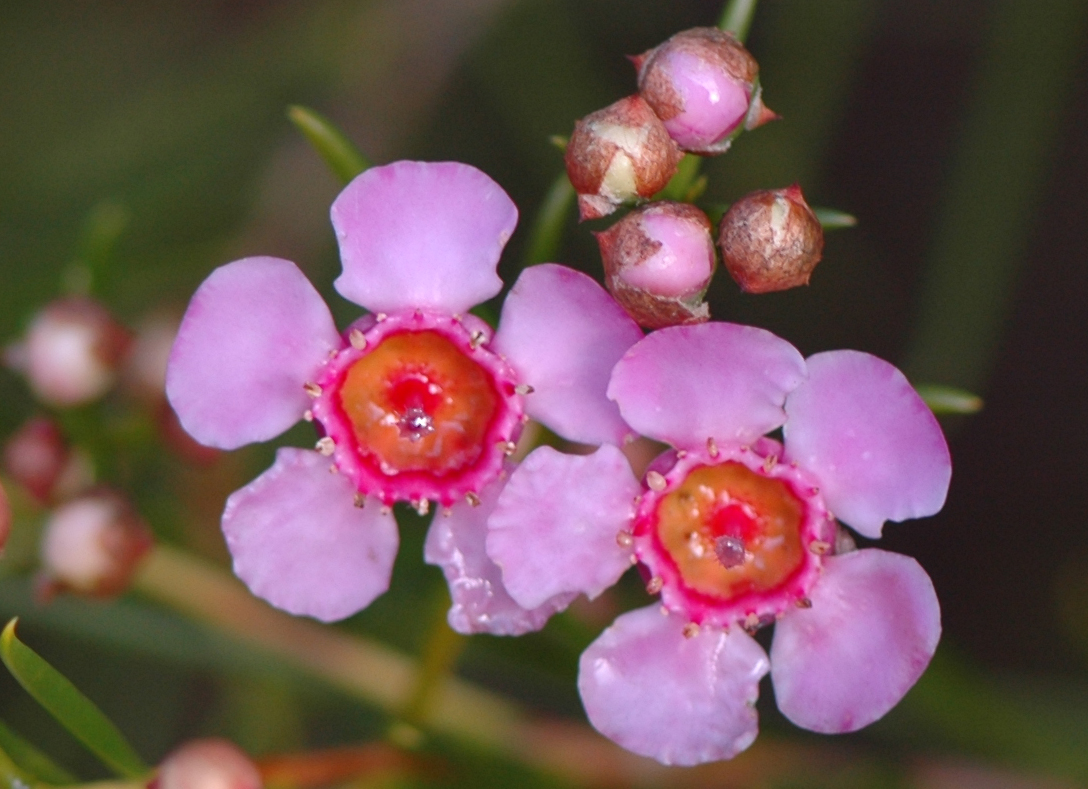
The Geraldton Wax natural form likes its soil to be acidic or neutral while quite a lot of Geraldton's soil, particularly in the Central Business District area near the coast, is alkaline due to the influences of the coast. So waxes from the Geraldton area are a mismatch with the soil type in the Geraldton City Centre. However, with a little soil treatment they can grow in your garden.
For more information view the pamphlet here
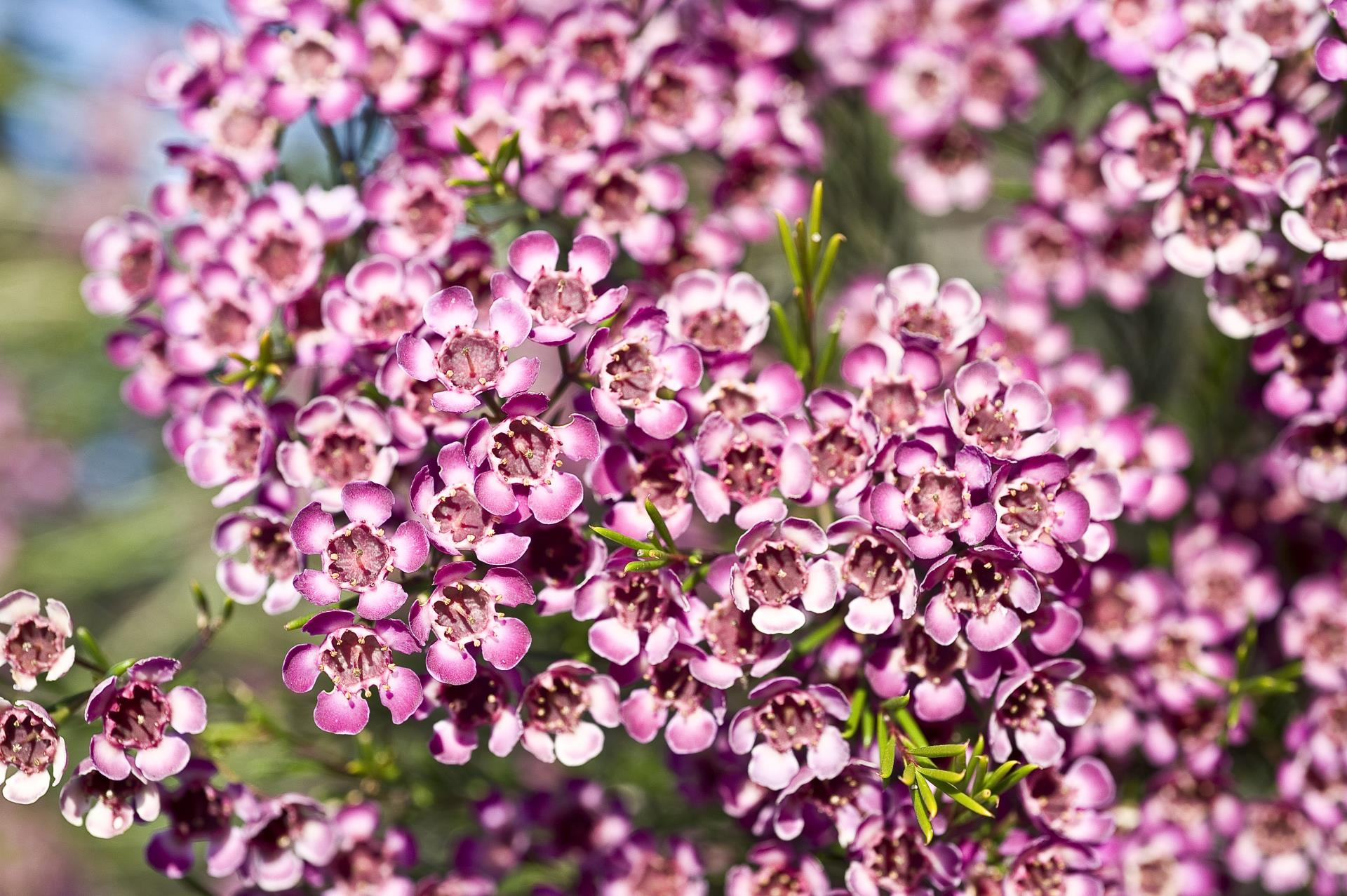
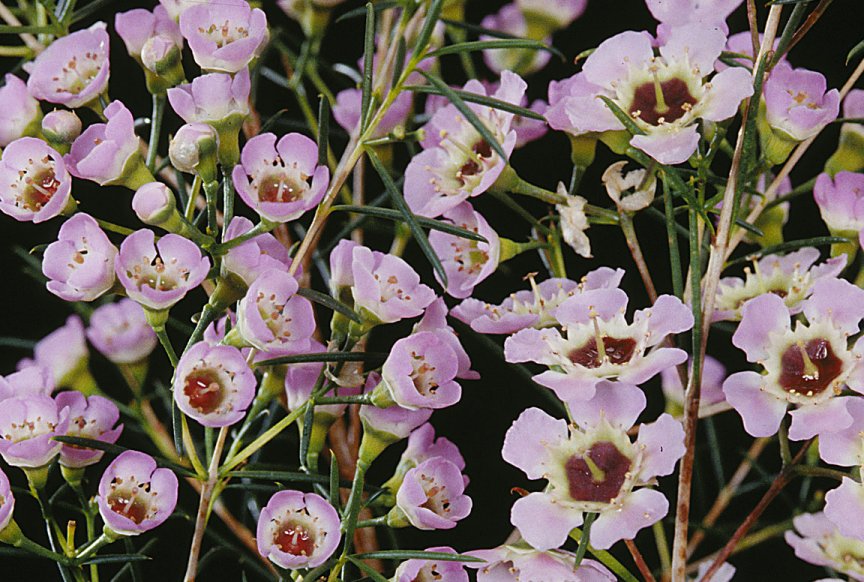
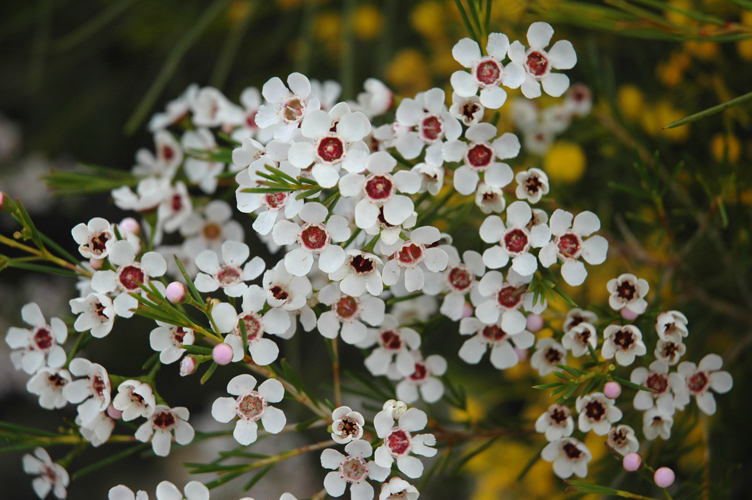
One of the plants in my front garden.

How interesting, and yours are lovely.

This are not mine Incognito~ It is a site to explain and show the variety of bush.

I just saw the bit of writing under the last photo lol

They are a beautiful flower. At my old place I had a large plant in the front yard and when it flowered many people asked what it was.

Very delicate and very pretty.

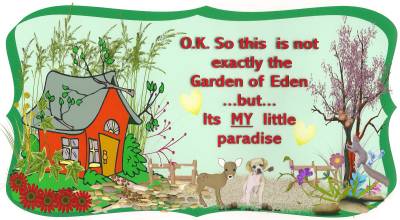



Indian Creates Vegan Wool From A Wasteland Plant
Intrigued at the sight of hummingbirds using a fibre from a flowering plant to keep their young ones warm, Tamil Nadu-based Gowri Shankar's curiosity about this plant piqued as he was looking out of his window one day. Shankar identified the plant as Calotropis and began to research about the plant's fibre. Five months on, he created an alternative to wool that is wholly plant-sourced and vegan. Shankar created 'Weganool' by using the hollow and light cellulose fibres of shrubs Calotropis Gigantea and Calotropis Procera; his faux wool has a composition of 70% organic cotton and 30% calotropis plant, and it could just be the next thing in the fashion scene! Production of the wool is done by hand by rural women near Auroville in the outskirts of Pondicherry in Tamil Nadu.
The natural fibers used to create vegan wool. Photo courtesy: Faborg.in
The Plant
Calotropis, is a wasteland shrub and it yields a durable fiber (commercially known as Bowstring of India) used to make ropes, carpets, fishing nets and sewing thread. Calotropis Gigantea and Calotropis Procera are Ayurvedic plants with medicinal properties and grow all over India. The plant is a tall, flowering shrub that thrives in dry and harsh growing conditions without human intervention, water, fertilizers or pesticides in Africa and several Southeast Asian and Middle Eastern countries. It is also known as giant milkweed, and has thick stalks and pale flowers.